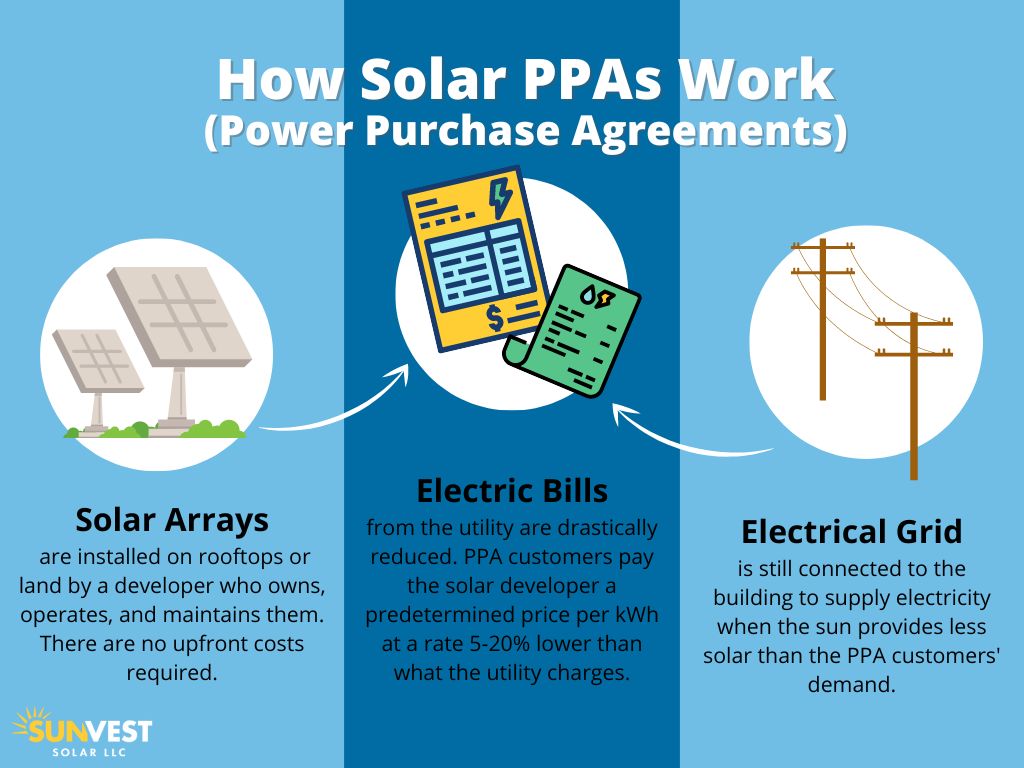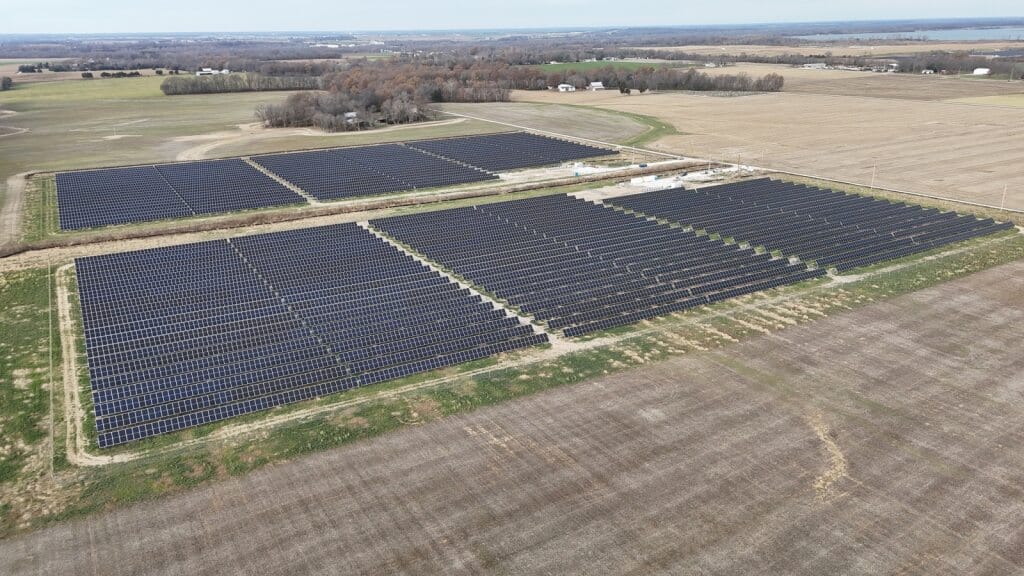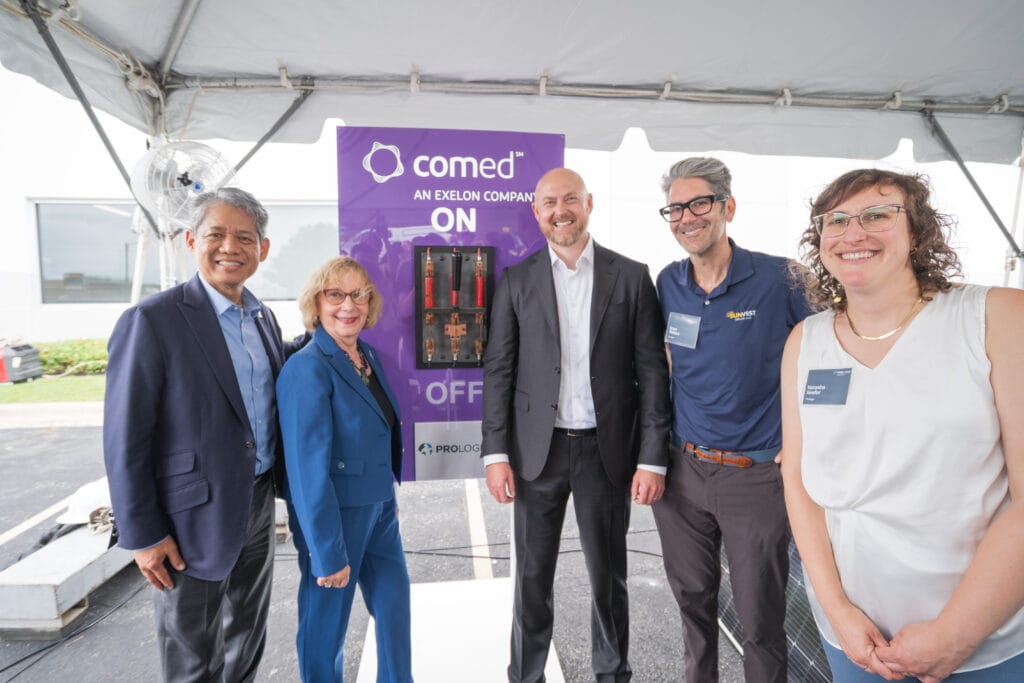Power Purchase Agreement (PPA) Basics for Building Owners
Commercial and industrial building owners have a few advantages when it comes to the potential for solar production: flat roofs, large footprint, and high electricity use. The main benefit of solar power is the lower electricity bill that results from generating your own electricity.
A common barrier to entry though is the capital investment needed to install and maintain a solar array large enough to handle a building’s needs. That’s why many building owners opt for a Power Purchase Agreement (PPA), a type of solar financing agreement with third-party developers like SunVest Solar.
How Does the PPA Work?
PPAs help commercial and industrial building owners enjoy the benefits of renewable energy without the upfront cost or long-term maintenance. Buildings that make ideal PPA candidates are a minimum of 35,000 square feet with at least $3,000 per month in electricity bills. We’ve broken down the PPA basics below for those considering this route.
Partnering With a Developer
Full-service solar developers like SunVest take care of the design, build, installation, operations, and maintenance for solar arrays. The developer owns the array. Building owners just provide the space on the roof or on adjacent land via a site lease. PPAs are not lease agreements where the developer pays the building owner to rent space for a solar array to reside. Instead, the building owner pays the developer a predetermined price for a designated period of time. Most PPAs last 20-25 years.

Electric Bill
The building owner maintains the relationship with the utility company for its energy needs, especially during times when the sun is providing less than the building’s energy demand. Instead, the building owner will pay the solar developer a predetermined cost per kWh for power generated – which is typically a 5-20% reduction of their current rate. Not only are utility bills less, but electricity costs are predictable and stable.
Design, Permitting, and Installation
The solar developer takes care of everything when a PPA is in place. From determining the solar array size and power generation capacity, to applying for state or federal incentives, getting permits and approvals, and completing installation.
The amount of offset a building can expect depends on the space available for solar panels and the annual electricity usage in the building. Once the array is installed, the solar developer connects the system to the local utility grid. Any excess power generated is sold back to the utility. Anytime the building’s demand exceeds generation from solar it can simply pull power from the grid. The owner will only be charged for the net of generation it buys from the utility, plus some taxes and fees for maintaining grid infrastructure.
Operation and Maintenance
Once installed, the solar developer continues to operate and maintain the system. SunVest has a full suite of in-house operations and maintenance services, including remote monitoring and data analysis, preventive maintenance, and corrective maintenance to ensure the building owner receives the maximum benefit of a PPA.
Commercial and industrial building owners who enter a PPA with SunVest Solar benefit from a solar installation that operates safely with optimal efficiency. If you have any questions or are interested in learning more, please contact us and we can connect you with a PPA expert.
Stay Connected! Follow SunVest Solar, Inc. on LinkedIn.

